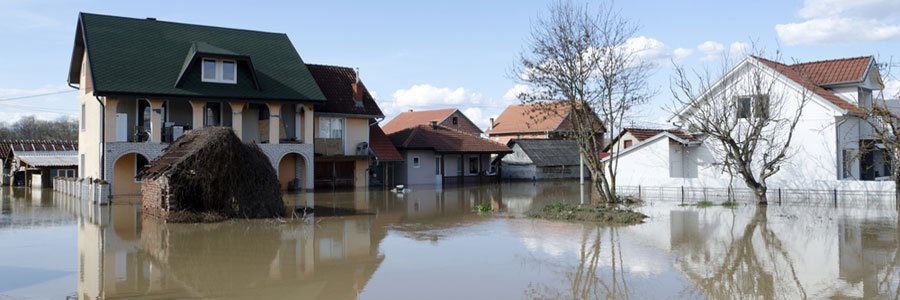
Hurricane Matthew wreaked havoc on the East coast of the United States, but we all know it could have been much worse. Luckily winds gusts stayed mostly under 80 mph, but the cause of much of the destruction was flooding.
Unfortunately, many of those affected did not have coverage for flood insurance because “they were not in a flood zone” or “their mortgage didn’t require it.” However, the problem is that we live in Florida, and everyone lives in a flood zone.
Of course properties on the beaches and in the lower lying areas of St. Pete (i.e. Shore Acres) are at more of a risk due to the elevations of the properties, but even properties in the middle of St. Pete would be susceptible to a flood if we had a major hurricane. If you don’t believe me, please take a look at NOAA’s Storm Surge Hazard map.
Fortunately, there are a few affordable options for those individuals that are located in flood zones B, C, & X that are not located in a Special Flood Hazard Area (SFHA).
- Preferred Risk Policy (PRP)
These policies are offered by the National Flood Insurance Program (NFIP) and are the most secure option you have. The NFIP offers set coverage limits with a $1,250 deductible for all options. For a primary residence that has $200k in Building coverage and $80k in Contents your premium is just $425 a year. Just like your standard NFIP insurance policies, the max limits provided are $250k for Building coverage and $100k for Contents. Another benefit is if your property gets remapped into a higher rated zone you may be eligible for the Newly Mapped Procedure which only increases your premiums on a glide-path instead of a dramatic year over year increase. These policies are subject to the Homeowners Flood Insurance Affordability Act (HFIAA) Surcharge so non-primary residences are hit with a $250 fee compared to the $25 fee charged to primary residences.
- Private Market Flood
After Flood prices sky-rocketed in 2012 (due to the Biggert-Waters Flood Insurance Reform Act), many private market companies saw an opportunity to compete in a market that before only had one party, the US Government. These companies are able to offer unique coverage options (i.e. Loss of Use and Replacement Cost on Contents) and higher Building & Contents limits at a relatively inexpensive premium. Unfortunately, policy language is different amongst the options available in the marketplace, so we strongly suggest reviewing the contracts with your insurance agent. Also, there are both admitted and non-admitted solutions available. Admitted carriers are backed by the Florida Insurance Guarantee Association (FIGA) if they were to have solvency issues and their policy language must be approved by the state’s Office of Insurance Regulation. Non-admitted carriers are not backed by any guarantee fund if they were to go bankrupt, and the policy language does not have to be approved by the state.
- Homeowners’ Flood Endorsement
The third option is to see if your current Homeowners insurance carrier offers a Flood endorsement. When available, these products are typically the least expensive option. Depending on your carrier, you may also be subject to the same deductible for the one occurrence (i.e. 1 named hurricane). Like private market policies, these policies are not standardized, so it is best to discuss the options with your insurance agent. Also, not all carriers have rushed to offer private market alternatives so your current carrier might not have an option (yet). The good thing is that most of these options are admitted carrier options.
Deciding whether you need a Flood insurance policy and determining the right flood policy alternative for your particular property can be a difficult task. If you have any questions about the flood options that might be available for your home or business property, please contact Brian Ford, CPCU at BFord@InsuranceResourcesLLC.com or call our office at 727-345-0242.











